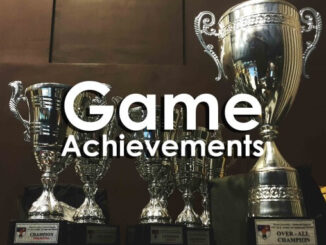
When games are deliberately used for learning, in addition to the gameplay, there has to be some underlying application of coherent learning theory which is relevant to the use case. For example, when we discuss ‘gamification’, very often the principles which are being applied relate to Behaviourist theories of learning. Indeed, this is one of the reasons that gamification is often resisted or criticised – because it brings to mind B. F. Skinner ‘adjusting’ the behaviour of rats or pigeons by the use of an electrified cage.
Well thought out gamification has moved way beyond that, of course, and frameworks such as Yu-kai Chou’s Octalysis help us to understand motivation to act in a much more humane way. But the use case of ‘gamification’ nevertheless focuses on behaviour. We know that our design is successful because people act – they behave in some specific way.
What is Social Constructivism?
Games-based learning is very often considered a Constructivist approach in that it aims to put tools into the hands of learners to construct their own learning, usually through ‘solving’ some kind of central problem.
Social Constructivism takes that further by positing that this process occurs in social settings and that learning is constructed through interaction with others.
This article looks at some principles and ideas behind social constructivism (SC), and explores how a Commercial Off the Shelf (COTS) game satisfies those principles. It is not intended to be a coherent history or study of SC and will take ideas from multiple theorists.
According to Social Constructivism:
- Learning is constructed in response to external stimuli.
- Learning is a shared experience not an individual one, brought about through interactions and language use.
- Knowledge is constructed on the basis of existing knowledge. It is therefore an active learner-centric process.
- Learning is based both on what we think and what others bring as interactions.
- While learning is occurring, a group will construct a culture of shared (learning) artifacts.

(Most of) the remainder of this article explores how a COTS game can support these Social Constructivist principles in a learning intervention. But first, an assumption is made that a suitable game has been selected to support the desired learning outcomes. If guidance is needed on how to do that, there follows a brief extract taken from an article which deals much more fully with selecting and using COTS games in learning. The below will only consider WHY games support social constructivism, so for a practical guide on using a game in an actual session, see this other article.
Unless you are using a simulation, it is unlikely that a game’s theme will relate closely (or even at all) to your learning outcome. It is much more likely that you will be using a COTS game to serve learning outcomes around skills such as strategy, planning, problem-solving, systems thinking, teamworking, all of which are common experiences afforded by modern tabletop and video games.
When deciding on a suitable game, look beyond (way, way beyond) the game’s theme and reflect on the experiences that people have when playing. Think about those experiences in conceptual rather than specific terms. For example, rather than thinking that Codenames is about guessing words based on clues, think that it is about effective communication and shared cultural knowledge. Rather than categorising Age of Empires as a game of medieval conquest, reflect on it as an experience of resource management.
External Stimuli and construction of knowledge
Experience is at the centre of Constructivist approaches, and provides the ‘external stimuli’ from which meaning and knowledge can be constructed. Sometimes simplified as ‘learning by doing’, there is of course far more to it than that – because along with the doing there must be inquiry, reflection, analysis and synthesis.
Games provide stimulus, and can often do so in ways that wouldn’t be possible in one were striving for a ‘real’ experience – because of cost, risk or time constraints. And COTS games provide a very cost-effective way to do this – compared with customised games-based learning interventions.
Games are engines for problem solving and decision making, and provide instant feedback on the consequences of decisions, compressing ‘experience’ into a manageable timescale.

To get the best from this, skilled facilitation is still required. It is not enough to allow a game to be played and expect learning to ‘happen’. The experience of play provides a basis to reflect, draw conclusion from reflection and to hypothesise and experiment on how to use learning gained. According to Alan Amory, “we don’t learn from games, we learn through them.”
Example: A game with a fairly brief duration can be repeatedly played allowing players time between each iteration to reflect, draw conclusion, and hypothesise and plan to improve their results in the next iteration. Open questions which naturally lead to exploration of decisions and consequences. such as ‘What went well?’ ‘What was the turning point?’ provide a good basis for discussion. The learning emerges from the shared insights. Light strategy games, or games where ‘productivity’ can be iteratively improved work well here. e.g. Lovelace and Babbage, Lemonade Stand.
Shared Experience and Language Use
Cooperative games, where you win and lose as a team, definitely provide a shared experience, but there is no need to assume that experiences need to be ‘sociable’ for them to satisfy a social constructivist approach. You can learn from your interaction with a competitor, just as well as through interaction with a teammate. It isn’t even required that learners are actually geographically in the same place. Learning is achieved through social interactions and dialogue, and as long as a game experience facilitates that, it will meet the requirements of a social constructivist setting.
Interaction between players / learners is primarily expressed verbally. We learn through what others say, because language represents a shared set of symbols for sense-making. Unlike non games-based learning, however, games sometimes have their own symbols which carry out the same ‘communication’ function. For, example the ‘meaning’ of a move in chess is encoded in our knowledge of the moves and relative value of the pieces and our experience at ‘reading’ the current position of the pieces.
Example: Aside from encouraging discussion and shared insights during facilitated time, outside of gameplay, learning can occur during gameplay where interaction and discussion about what is happening is part of the intended gameplay. In role-playing games (RPGs) players construct a shared narrative as they play, some of which will be entirely ‘in character’ but some of which will be ‘meta’ conversations, about the play, about thought processes about decisions that characters have made and so on.
Active, learner-centric and based on existing learning
In a game setting, players must take actions if they are to participate at all. This decision-making process elicits feedback in the form of mechanisms such as scoring, the relative positions of game components, narrative outcomes or changed playing capability, for example. Learning settings using games therefore encourage iterative cycles of experimentation and adjustment to ‘improve’ play – a process in which learner autonomy is key.
Not only can players/learners construct new knowledge from their interactions with others with different levels of experience from themselves, but the process of building on the foundations of their own existing learning is made quicker by the compressed nature of time in most games.
Players with experience of the game in play will bring theories about ‘good’ strategy (heuristics) to the table. Facilitation should focus on these and on encouraging players to construct new heuristics, based not only on previous play, but on real-world experience that is similar.

Example: During a game of Pandemic, a new player, who is a strategic planner, posits a new heuristic, that the team should restrict planning to 3 moves ahead, because he has noticed that longer term plans are being spoilt by turning up an Epidemic card. Based on his out-of-game experience of risk in too distant planning horizons, and the probability of an epidemic card turning up, he has contributed to a strategy that might just win the game.
Pandemic (all versions) is available on Amazon
Interactions
‘What we think’ about some concept can be referred to as a ‘schema’ – a representation of a concept. Each new interaction which relates to that schema it treated in one of three ways. If it reinforces the schema (it is as expected, based on existing experience and knowledge) the new information is added to the schema. If the new piece of information cannot be fully explained using the schema, it ‘tunes’ the schema – the new knowledge is incorporated but modifies the schema. If the new information is outside the limits of ‘tuning’ (it is too unlike the existing schema), a new schema is created to accommodate it.
Play-based interactions, whether it be with team members in a cooperative game or antagonists in a competitive one, provide a rich source of interactions to reinforce, tune or create wholly new schema. Arguably they are particularly good at the latter two, because experiences and interactions can be created in game situations which are unlikely to happen in real life, or are even impossible.
Playing a game, ‘in character’ can be just what is needed to challenge existing schema, through experiencing an alternative reality, RPGs are particularly good for doing this, and some first person video games also deliver. Hellblade: Senua’s Sacrifice, while being a fantasy combat game, is extra interesting, as it was created with input from people with lived experience of psychosis, mental health professionals and neuroscientists. The experience of playing the game is discomfiting but enlightening, and immersion is included to the degree that you can only advance in the game, by accepting Senua’s reality – for example some puzzles reflect the idea that people undergoing a psychotic episode can see ‘patterns’ in reality that others can’t.
Hellblade: Senua’s Sacrifice is available on Amazon

A culture of artifacts
Any shared experience of a games-based learning intervention will produce a culture which is unique to that instance of the experience. As a function of the characteristics of the specific game experience, the prior knowledge and interactions of each of the participants, a set of learning artifacts is produced with shared meanings, which will differ from those created during similar experiences. When learners are immersed in a culture of this kind, they are constantly learning how to be part of it.
Example: One, perhaps too literal, example of the creation of learning artifacts, would be the use of Minecraft in learning settings. the artifacts one can produce map exactly to one’s knowledge of the way the (Minecraft) world works. It is necessary to understand how redstone works before you can use it make you building more useful, and before that you will need to know where to find it and how to craft it. Learning and building together in Minecraft leaves a graphic representation of the shared knowledge of a team, where each member has been able to bring their own unique contribution to the greater whole.
- James Bore – The Ransomeware Game - 13th February 2024
- Ipsodeckso – Risky Business - 23rd January 2024
- Review – Luma World Games - 15th December 2023





Be the first to comment